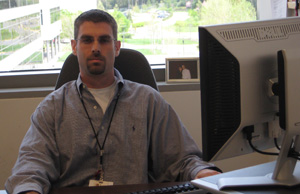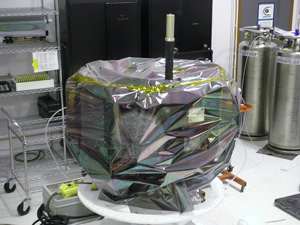Meet the IBEX Team: Justin Francis

Justin Francis has always loved fixing mechanical things. "As a kid, I was interested in bicycling and fixing bicycles, and I used to run a repair shop out of my parent's garage," he said.
Justin grew up in a small town called Rock Tavern, New York, about an hour northwest of New York City. He felt drawn to engineering at a very early age. "I always knew I wanted to be an engineer, ever since I was little," he said. To achieve his dream career, Justin earned a Bachelor's of Science degree in Mechanical Engineering and a Master's degree in Aerospace Engineering from Virginia Tech.
His father's strong work ethic inspired him to pursue his goal of becoming an engineer. "My father inspired me. He wasn't actually an engineer, but he always worked hard, and was always building or repairing things around the house. My father still likes to reminisce about the Boy Scout Pinewood [wooden car] Derby we won one year, thanks to his engineering," Justin said. He advises students who hope to follow in his career path to "Study hard, and don't sell your books after freshman year. You will need them again!"
Lately, Justin has been following his father's example by working especially hard on the IBEX mission. As the lead mechanical analyst for the IBEX program, Justin is responsible for the structural integrity of the IBEX Flight System, which means that he makes sure IBEX will withstand the loads generated by the launch vehicle during launch, and the thermal loads the spacecraft will experience on orbit. Right now, Justin and his team are completing analysis simulations to determine design changes to the IBEX Flight System to mitigate increased launch loads from the Pegasus rocket, which will take the spacecraft into space. The increased launch loads have delayed the launch several months. The current launch date is August 2008. Justin explained, "The results of our recent IBEX Observatory vibration test campaign showed that our model [of the spacecraft, solid rocket motor specifically] had to increase in stiffness to match the test data. This stiffer model resulted in higher predicted launch loads." Upon completion of these design changes, which are intended to reduce the stiffness of the IBEX Flight System and in turn reduce the critical launch loads, the team will perform additional subsystem testing. Justin will analyze the test results and correlate the new spacecraft model before the IBEX team submits the new model to NASA. "It can be challenging, both technically and in terms of time," Justin said of his job.
When he is not hard at work, Justin enjoys spending time with his wife and 21-month-old son. "I also enjoy mountain biking and auto-crossing, when I get the chance," he said.
Justin and the IBEX team had hoped that the IBEX launch would take place in July, and that Justin's work on the mission would be largely done at this point in time. However, Justin enjoys being a part of the mission, and is proud to have been on board since the spacecraft was just a concept. "IBEX is the most unique and interesting spacecraft I've ever worked on. The fact that it has three separation systems [to detach the spacecraft from the rocket and get it into space], and a 700-pound solid rocket motor in the middle makes it really interesting," Justin said. "I was surprised at how dedicated the whole [IBEX] team has been. Working on IBEX has been a really great experience."
Justin has not always worked on space missions. Before working in the aerospace industry, he designed land-based tracked vehicles for the military. "Transitioning to satellites was a challenge but it turned out well," he said. "I was ready for something new, and the aerospace industry is definitely appealing. It's actually very rewarding to build something tangible and to launch it into space for the advancement of science. It is also nice to do something productive instead of destructive." Right now, Justin is employed by Orbital Sciences Corporation, a company based in Virginia.
In the future, Justin hopes to keep contributing to science missions that are similar to IBEX. "I would like to continue to work on science missions, and to continue to bring these kinds of instruments to space, and to bring research back to Earth," he said.
IBEX continues to be his favorite space mission, and hopes that future missions he is a part of will be as enjoyable to work on and as valuable to science. "The IBEX mission has definitely been unique and challenging, but definitely one of the best programs I have worked on," he said.
